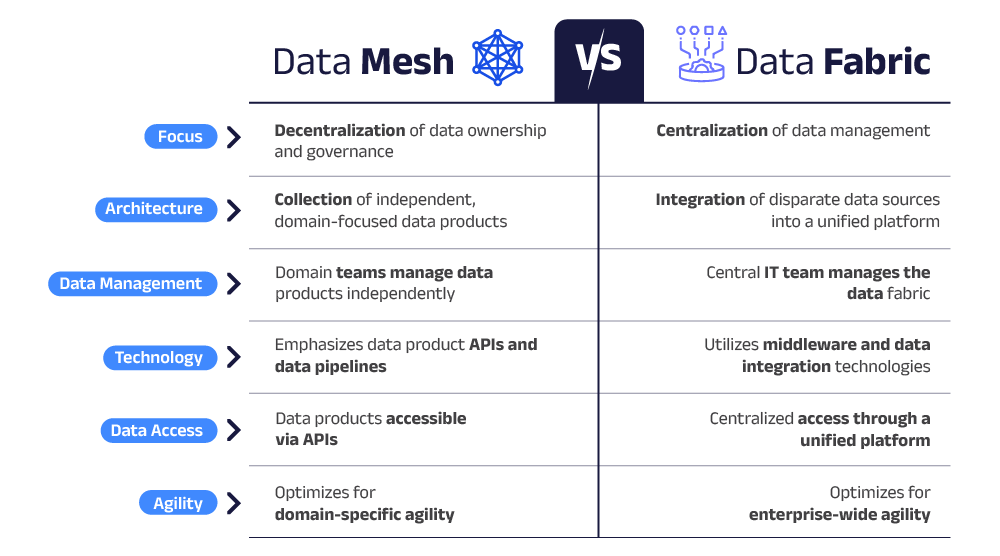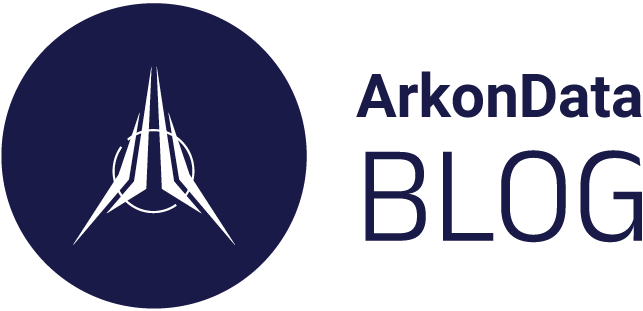Data Mesh: an alternative for managing data
- 4 mins
Not many years ago (2019) a rapidly-spreading concept emerged among data experts and in Data-driven companies focused on objectives, which Zhamak Dehghani named as Data Mesh. And if you wonder what it is, keep reading to find out.
If the volume of information that your company manages today is vast or constantly growing, it is possible that you may question the data architecture you currently work with, especially if you are interested in having divided information according to the areas your company has, such as sales, operations, marketing, logistics, finance, human resources, etc.
What is Data Mesh?
IBM, one of the technology consultancies with the greatest impact worldwide, defines Data Mesh this way: it is a data architecture responsible for decentralizing information in business domains, and also provides greater control to those who work with cell-specific data.
Data decentralization attacks a main problem that engineers or data scientists often face, which are process bottlenecks, which affect the workflow's performance in other areas.
As a company grows, it becomes more difficult for internal teams to be aware of all business operations, this is why Data Mesh also focuses on this issue, where each domain only controls the data that requires it without the essential support of data experts, thus achieving savings in time and resources thanks to not having to solve problems from other teams.
According to the author of the Data Mesh concept, there are 4 main components of it1:
- Domain ownership: It means that each team within the company is only responsible for the data essential for their operation. The architecture per domain follows a distribution according to the operations and analysis of the owner team.
- Data as a product: It is based on the term Product Thinking, which places data as the main element to spin a system. Its principle is that data can be useful for another domain. Data Mesh should also be associated with accessibility, usability and distribution.
- Self-sufficient infrastructure: This step emphasizes that there must be a platform that provides functionality and tools to the architectures of each business domain, thus generating interoperability for data consumption.
- Governance and policies: This step indicates that the aforementioned interoperability must be standardized to accomplish the rules or policies established by the organization or some external department.
Pros and cons of Data Mesh
Since Data Mesh is a recent strategy, its disadvantages have been fully identified among stakeholders and data specialists. For this reason, here are the pros and cons of this architecture.

Data Mesh vs Data Fabric
A term that is often confused or associated with Data Mesh is Data Fabric, however, the latter focuses on the fact that data can be consumed, governed, and shared from any system and regardless of business area, contrary to what Data Mesh allows, that is to manage data in a close way.
Here are their differences:

Why implement Data Mesh?
One of the main recommendations for implementing Data Mesh is to have enough data maturity to be able to establish information management by domain. Likewise, teams that deal with data must be aware of its uses and limitations, so its implementation should not be taken lightly.
However, the adoption of Data Mesh is reflected in some benefits such as:
- It empowers data specialists to manage data and decide what to do with it.
- It makes the data visible because it is known where it is and who is using it.
- Makes sharing information and decision-making easier despite their autonomy.
Conclusion
It is no coincidence that the more important information is, the more strategies emerge to improve it. One of them is Data Mesh, which offers data management by business areas to allow data specialists to focus their efforts in one direction for the organization’s common good.
To achieve this, technological tools and adequate knowledge are essential since these will enable a good understanding to lead people to consolidate a Data-Driven strategy.
Would you like to know more about Data Mesh and data optimization? At Arkon Data we create solutions that are suited to your company’s needs to consolidate your information in favor of organizational development and digital transformation.
1. Jochen Christ, Larysa Visengeriyeva, Simon Harrer, 2022.




